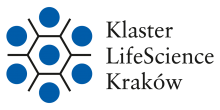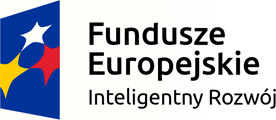
MRI contrast agent for use in the diagnosis of early changes in the endothelium of blood vessels
The subject of the present invention is the MRI contrast agent for non-invasive diagnostics of early changes occurring in the course of the development of endothelial dysfunction of the blood vessels, which is accompanied by difficult to monitor local biochemical changes and small changes in the ultrastructure of endothelium and blood vessel wall.
This contrast agent has the form of a hydrophilic complex containing gadolinium. It is commonly used as a magnetic resonance imaging (MRI) contrast agent in cardiovascular diagnostics and as support in procedures through intraoperative imaging, e.g. during ultrasound thermoablation. Gadolinium-based contrast agents available on the market are complexes, which aim to reduce their toxicity and improve their pharmacokinetics. These preparations fulfil their role in imaging of the circulatory system, however, their low molecular weight causes that they penetrate into the tissue spaces relatively quickly and non-specifically. It significantly limits the possibilities of their use as a selective diagnostic tool in cardiovascular pathologies or in imaging of early stages of cancer. In order to use MRI imaging in the diagnosis of pathological conditions related to cardiovascular dysfunction, preparations based on nanoparticles, polymers, micelles or lipid aggregates are being developed, most often in the form of liposomes. The issue of toxicity remains unsolved in the case of nanoparticles and polymeric particles, while in the case of aggregates, such as micelles and liposomes, the main difficulty is obtaining a stable preparation when it is in the circulatory system. A partial solution to these problems is achieved by using preparations that contain complexed gadolinium.
The subject of the invention is a contrast agent for use in the diagnosis of early changes in the vascular endothelial function indicative of endothelial dysfunction of blood vessels. Its form is an aqueous suspension containing gadolinium as a hydrophilic contrast agent, encapsulated within single-layer liposomes .
The composition and size of these liposomes are adapted to the pathophysiology of endothelial dysfunction. The building blocks of the liposome wall are biologically neutral phospholipids and cholesterol, which makes the liposome wall impermeable, and polyethylene glycol covalently bound to the phospholipid, which ensures long-lasting circulation of liposomes in the bloodstream, and, as a consequence, their accumulation in the blood vessel wall with a pathologically changed vascular endothelium. The sizes of liposomes are selected in such a way that they can penetrate the vessel wall with a pathologically changed vascular endothelium.
The invention is protected by international patent application. The invention was co-developed by company Lipid Systems and now consortium is looking for entity interested in further development of the project. 
informacja / kontakt broker Uniwersytetu Jagiellońskiego
























